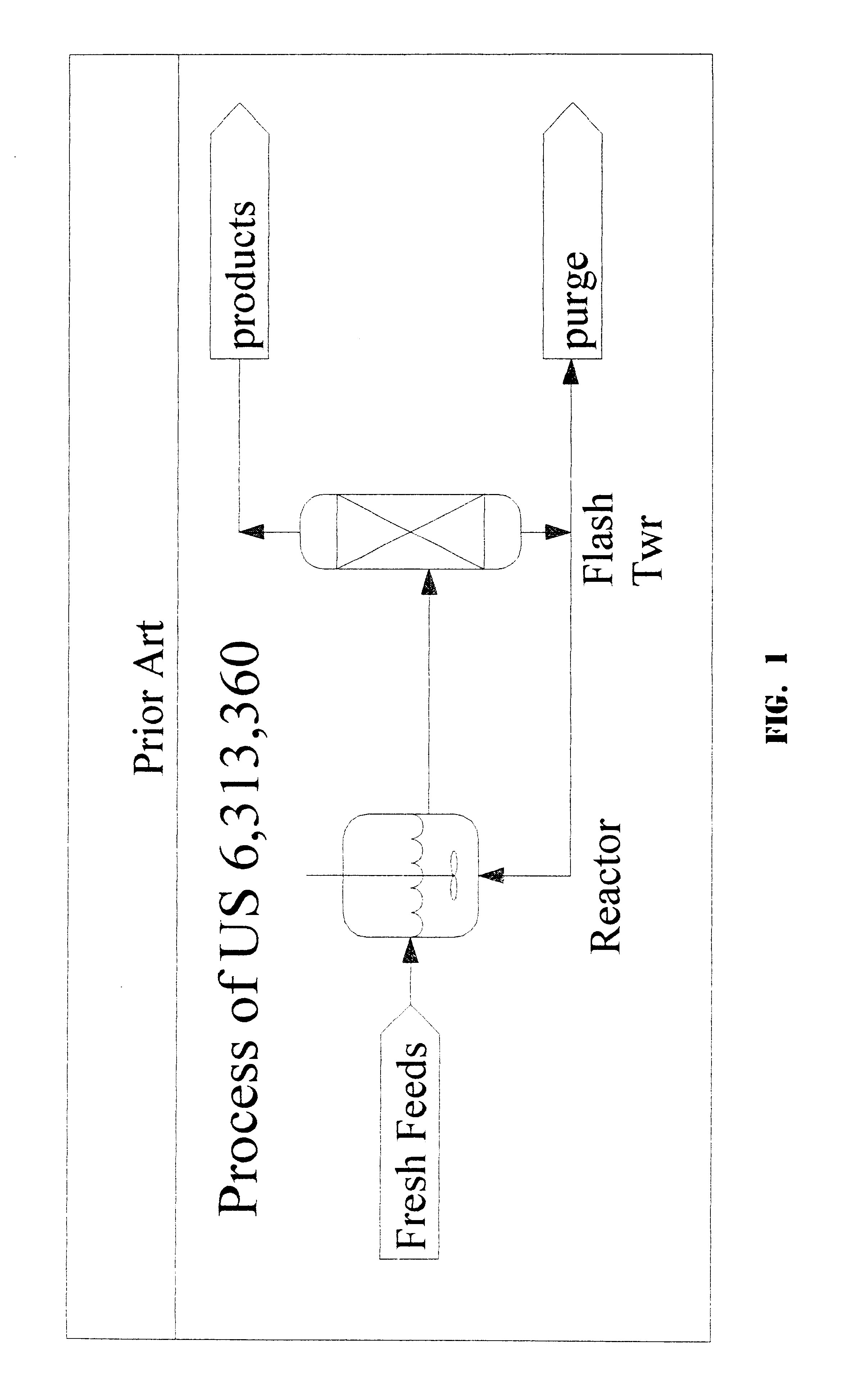1,1,1,3,3-pentachloropropane process purge stream concentration using a secondary refluxed evaporator and secondary product recovery
a technology of refluxed evaporators and purge streams, which is applied in the direction of halogenated hydrocarbon separation/purification, halogenated hydrocarbon preparation, organic chemistry, etc., can solve the problems of rapid degradation of catalysts, large first towers, and the scheme that cannot work for the catalyst system described herein, so as to achieve maximum catalyst recovery
- Summary
- Abstract
- Description
- Claims
- Application Information
AI Technical Summary
Benefits of technology
Problems solved by technology
Method used
Image
Examples
example 1
This test demonstrates the stress upon the catalyst system when subjected to high temperature for extended periods of time. A sample of ordinary prior-art catalyst recycle material was obtained from the pilot plant HCC240f reactor and distillation system, which employed prior-art single-stage catalyst recovery. This recycle material contained about 54 wt % HCC240fa, 16 wt % HCC470jfdf, 22 wt % HCC470nfaf, 2 wt % TBP, and 1% FeCl3. The balance from 100%, about 5 wt %, was primarily unanalyzed material, presumed to be phosphorus-containing compounds from the degradation of TBP. Approximately 5000 grams of this prior-art catalyst recycle material was flash distilled in the lab in a single-stage glass distillation apparatus at approximately 10 Torr pressure. The boiling bottoms material was below 98 degrees C. for 1.5 hours (fraction A), 98-109 degrees C. for 4 hours (fraction B), 110-125 degrees for 0.7 hours (fraction C), and 125-144 degrees C. for 1 hour (fraction D). Total heating t...
example 2
This test demonstrates the reduced stress upon the catalyst system that results from decreasing the maximum temperature. Approximately 5000 grams of ordinary prior-art catalyst recycle material from the pilot plant HCC240f reactor and distillation system was flash distilled in the lab as before at approximately 10 torr pressure. The boiling bottoms material was below 87 degrees C. for 1.8 hours (fraction A), 87-115 degrees for 2.3 hours (fraction B), 115-123 degrees C. for 0.9 hours (fraction C), and 123-125 degrees for about 1.5 hours (fraction D). Total heating time was approximately 6.5 hours. The composite overhead sample collected during fraction D contained 1.3 wt % HCC240f, 38.9 wt % HCC470jfdf, and 56.0 wt % HCC470nfaf. The mobile black liquid remaining in the distillation pot represented the concentrated catalyst recycle material. No catastrophic decomposition of the bottoms material occurred in this experiment. This illustrates that lower temperatures prevent catastrophic ...
example 3
This test demonstrates the reduced stress upon the catalyst system that results from decreasing the residence time. Approximately 1200 grams of ordinary prior-art catalyst recycle material from the pilot plant HCC240f reactor and distillation system was flash distilled in the lab as before at approximately 15 Torr pressure. The boiling bottoms material was below 84 degrees C. for 0.4 hours, 84-120 degrees for 0.4 hours, and 120-145 degrees for 0.6 hours. Total heating time was approximately 1.4 hours. The composite overhead sample collected during the entire process contained approximately 50 wt % HCC240f, 15 wt % HCC470jfdf, and 30 wt % HCC470nfaf. The mobile black liquid remaining in the distillation pot represented the concentrated catalyst recycle material. No catastrophic decomposition of the bottoms material occurred in this experiment. This illustrated that shorter residence times prevent catastrophic decomposition of the bottoms at 145 degrees C.
PUM
| Property | Measurement | Unit |
|---|---|---|
| pressure | aaaaa | aaaaa |
| pressure | aaaaa | aaaaa |
| pressure | aaaaa | aaaaa |
Abstract
Description
Claims
Application Information
 Login to View More
Login to View More - R&D
- Intellectual Property
- Life Sciences
- Materials
- Tech Scout
- Unparalleled Data Quality
- Higher Quality Content
- 60% Fewer Hallucinations
Browse by: Latest US Patents, China's latest patents, Technical Efficacy Thesaurus, Application Domain, Technology Topic, Popular Technical Reports.
© 2025 PatSnap. All rights reserved.Legal|Privacy policy|Modern Slavery Act Transparency Statement|Sitemap|About US| Contact US: help@patsnap.com


